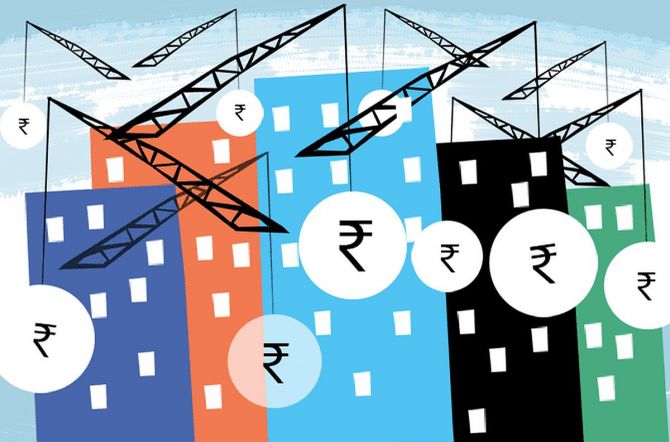All real estate developers may not be able to avail the benefit of Reserve Bank of India's one-time restructuring scheme as they might not meet the required financial ratios and have the necessary credit rating, HDFC vice chairman and CEO Keki Mistry said.

He was speaking at a real estate and infrastructure investor summit organised by Naredco.
"Restructuring may not necessarily help every developer because not too many will be able to meet the criteria laid down in terms of meeting the various ratios and getting credit ratings," Mistry said.
In August, RBI had allowed one-time restructuring for personal loans and for non-MSME corporate borrowers having an aggregate exposure of greater than Rs 25 crore and who were affected by COVID-19 related stress.
The key financial parameters to be factored in for implementation of restructuring are total outside liabilities /adjusted tangible net worth (TOL/ATNW); total debt /EBITDA; current ratio, which is current assets divided by current liabilities; debt service coverage ratio (DSCR); and average debt service coverage ratio (ADSCR).
RBI specified 26 sectors, including automobile, power, tourism, cement, chemicals, gems and jewellery, logistics, mining, manufacturing, real estate, and shipping, among others, for one-time restructuring.
Mistry advised the developer community to stay well capitalised and control the amount of leverage they take.
"From a developer's perspective, the important learning, not just post-COVID but pre-COVID, is to just strengthen the balance sheet.
“Bring in more equity and do not over-leverage. The market will reward you for not over-leveraging.
“The more you leverage, the more pain you will face in the days to come," he said.
Mistry said over the last eight months, markets are clearly distinguishing between stronger players and weaker players.
Interest rates are a function of perception of credit risks, he said, adding that "I think quality developers will, even today, be able to access money, not at 6.8 per cent or 6.9 per cent because the risk premium on a developer loan even from a prudential perspective is higher than what it is for an individual, but at relatively good rates".
However, weaker developers will find it difficult to raise money unless they improve the quality of their balance sheets, he emphasised.
Mistry said compared to six months ago, demand for residential properties now has picked up as people are beginning to believe that this is the best time to buy a property due to lower interest rates and as property prices have gone up in the last few years.
At present, it is difficult to say whether non-performing loans (NPLs) in the real estate sector will come down in near future, he said.
"I don't think that it is going to be that easy where suddenly overnight NPL are going to come down.
“You might even see an inching up of NPLs in the real estate sector, not significantly but slightly in one or two quarters before things stabilise, let’s say two or three quarters down the line," Mistry said.
He said consolidation in real estate sector can happen and should happen going forward, but the problem is that it happens at project levels and not necessarily at entity level.
"At the project level, when there is consolidation, there are lot of issues like approvals from lenders, flat buyers, regulatory authorities, RERA, government which still have to go through and it takes a long time.
"But otherwise that is the best way forward where bigger developers don't start new projects but take over projects of existing developers which are stuck, get those projects completed, get it at a much lower price.
“Someone will have to take a haircut in the process, but so be it," Mistry said.
Once consolidation happens, stuck projects can get completed and the developer community can earn a good name, he said.
With the kind of economic revival seen in the country, there could be some pressure on inflation coming about, Mistry said.
"If there is economic activity happening in a big way, it has to, at some point of time, start leading to higher inflation.
“If you do get higher inflation or if RBI perceives that there will be higher inflation, then the ability of the RBI to cut rates going forward would be very limited," he said.
Mistry, however, said over the next 6 to 12 months, the benign interest rate environment will continue.
He also expects RBI to continue infusing liquidity into the system like it has done in the last 7-8 months.












 © 2025
© 2025